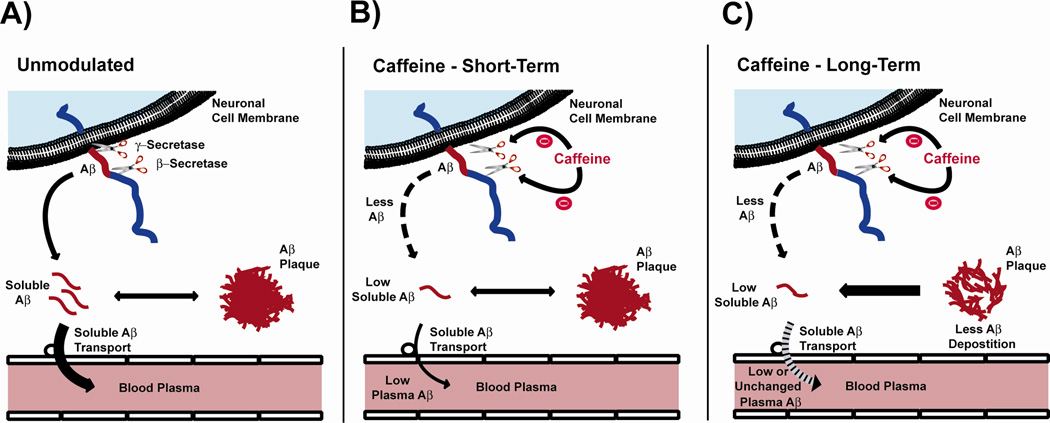Figure 1. Diagrams depicting brain Aβ production/clearance, the suppressive actions of caffeine on Aβ production, and resultant effects on brain and plasma Aβ levels.
(A) Unmodulated: Aβ is primarily produced in neurons, secreted into the brain extracellular space in soluble form, then enters a dynamic equilibrium between soluble and deposited (insoluble) Aβ. Continual transport of soluble Aβ occurs into plasma. (B) Caffeine: Short-Term: Caffeine suppression of both β- and γ-secretase activities reduces Aβ production, resulting in lower soluble Aβ in brain and plasma. The equilibrium between soluble and deposited Aβ is not impacted by this short-term reduction in brain soluble Aβ levels. (C)Caffeine: Long-Term: Continued caffeine suppression of Aβ production and resultant lower levels of brain soluble Aβ induce a flux of deposited (insoluble) Aβ to the soluble form, which is cleared from brain into plasma via soluble Aβ transport. Plasma Aβ levels may be reduced or not changed, depending on degree of caffeine-induced suppression of Aβ production. In aged APPsw mice given chronic caffeine treatment, their lower brain Aβ levels/deposition results in reversal of cognitive dysfunction.

